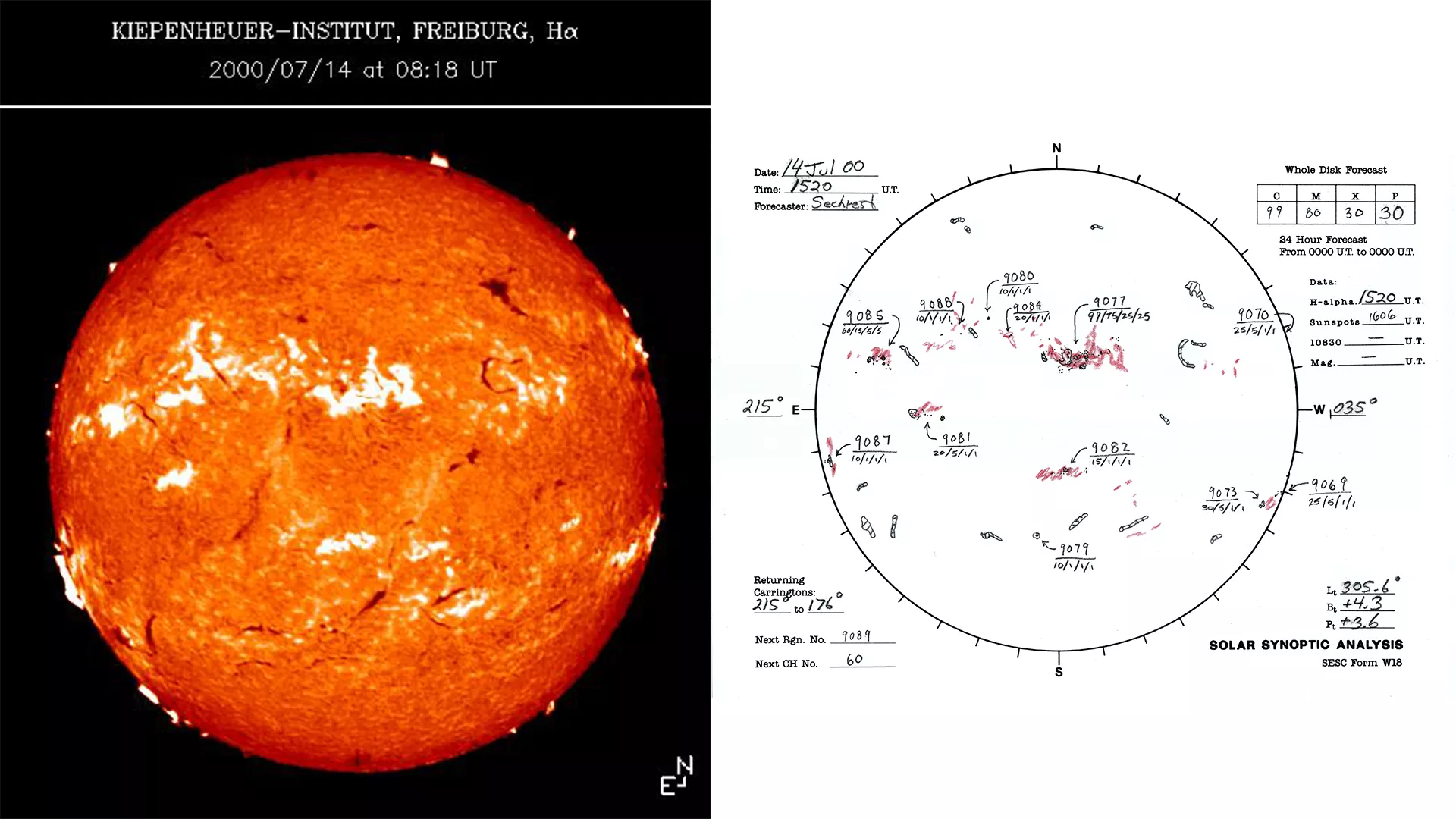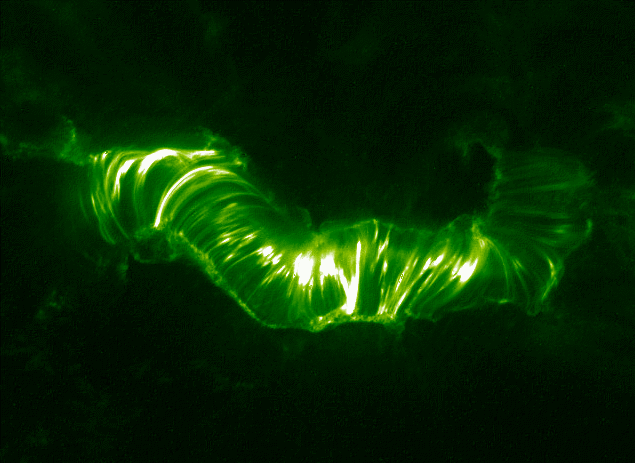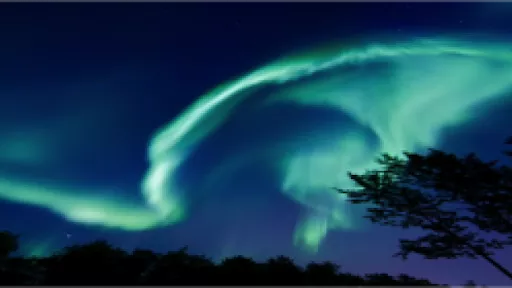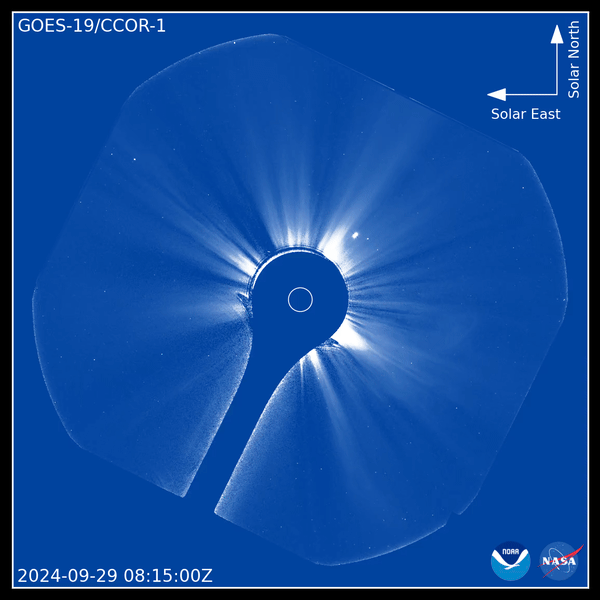
Left: Hydrogen-alpha image of the active sun on Bastille Day (July 14, 2000), highlighting chromospheric features such as prominences (bright arcs), filaments (dark arcs), and plage regions (bright areas). Right: Full sun drawing by SWPC forecasters on the same day, showing sunspot groups (solid), plage areas (shaded red), and filaments (cross-hatched lines). Credit: NOAA/NCEI and NOAA/SWPC.
On July 14, 2000, one of the most powerful solar events of the space age erupted from the sun, which became known as the Bastille Day Solar Event. The resulting space weather disturbances impacted Earth for days and marked a milestone in space science. Twenty-five years later, NOAA is reflecting on that powerful event and highlighting how dramatically our capabilities to observe, predict, and respond to space weather have improved over the past quarter of a century.
At that time, two solar cycles ago, the sun was at the peak of its magnetic activity, which is a period known as solar maximum. This phase is marked by an increased number of sunspots and more frequent solar events such as solar flares and coronal mass ejections, which are large bursts of plasma and a magnetic field from the sun's atmosphere.
On Bastille Day, the French National Day that marks the beginning of the French Revolution, a huge and magnetically complex active region, known as AR9077, appeared near the center of the solar disk. Forecasters at NOAA’s Space Weather Prediction Center (SWPC) along with scientists at the National Centers for Environmental Information (NCEI) as well as other solar and space weather observers, closely monitored the AR9077 using ground- and space-based instruments.

The magnetic arcade, which is a series of bright magnetic loops extending above the active region, was observed at AR9077 on Bastille Day 2000 in an extreme ultraviolet light (EUV at 17.1 nanometers) by NASA’s TRACE satellite. Source: APOD/NASA.
Between July 10 and 14, AR9077 grew quickly and moved westward across the sun’s surface. During that time, it produced four major solar flares, each more intense than the last, culminating in an X5.7 flare on Bastille Day. This was one of the most powerful types recorded by NOAA’s Geostationary Operational Environmental Satellites (GOES) in the soft X-ray range. Some of these flares were linked to solar proton events, when the sun sends out large amounts of high-energy particles that can disrupt satellites and pose risks to astronauts. They were also accompanied by coronal mass ejections, or CMEs, which are huge clouds of solar material that travel through space and can impact Earth. In response, SWPC issued several space weather alerts and warnings. A full summary is available in the archived SWPC Report at NCEI).
In 2000, NOAA’s operational GOES-East satellite was GOES-8. GOES-8 data provided a complete picture of the Bastille Day event, from the initial eruption to the arrival of an interplanetary shock at Earth. This shock is a wave of compressed solar wind and magnetic field that travels ahead of a coronal mass ejection. When it struck Earth’s magnetosphere, it triggered a significant geomagnetic storm, rated G5 extreme on NOAA’s G-scale, and produced spectacular auroras.

Auroras like this one, captured in Fairbanks, Alaska, occur when solar particles collide with gases in Earth's upper atmosphere during geomagnetic storms. During major events like the Bastille Day solar storm, auroras can be seen much farther south than usual. Photo by Neal Brown, courtesy of NOAA.
Solar activity during the Bastille Day event also caused significant disruptions to high-frequency (HF) long-range radio communications on Earth, which rely on the ionosphere to reflect radio waves. Radiation and particles from the powerful X5.7 solar flare strongly disturbed the lower ionosphere, leading to a shortwave radio blackout on the sunlit side of the planet. Since then, NOAA has developed better tools to monitor these disruptions and alert users in real time when solar flares may interfere with radio communications.
We are currently experiencing another solar maximum this year, and NOAA is continuing to monitor the sun and the space weather with even more advanced satellites and instruments, building on lessons from events like the Bastille Day 2000 solar storm. The latest GOES satellite, GOES-19, marked its first year in space on June 25, 2025) and has been operating as the current GOES East satellite since April 2025. It carries advanced instruments to monitor solar conditions, including:
- EXIS: Observes the sun, not only in X-ray, but also in extreme ultraviolet (EUV)
- MAG: Observes the space environment at GEO
- SEISS: Particle sensors
- SUVI: Solar ultraviolet imager
- CCOR-1: The first operational coronagraph; part of the SWFO program
Together, these enable better observation of the solar atmosphere and faster detection of events such as CMEs. Looking ahead, NOAA’s new and upcoming space weather capabilities, including new instruments, satellites and forecasting models developed specifically for space weather, support our agency’s core mission of helping the U.S. to become a more space weather-ready nation.

GOES-19 captured this early image of the solar atmosphere using CCOR-1, the first operational space-based coronagraph. The animation shows a coronal mass ejection (CME) erupting from the east limb (left side) of the Sun during a period of heightened solar activity.
